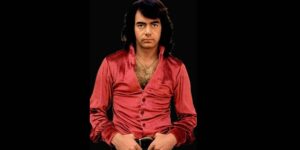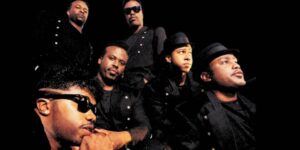The 1990s was a pivotal decade for hip-hop, marked by a surge in creativity, innovation, and popularity. This era, often referred to as the “Golden Age” of hip-hop, saw the rise of new artists, groups, and styles that would go on to shape the genre for decades to come. In this article, we’ll take a look at 12 classic hip-hop albums that played a significant role in the 90’s hip-hop renaissance and their lasting impact on the genre.
The Rise of Underground Hip-Hop
In the early 1990s, underground hip-hop was gaining momentum, driven by the DIY ethos of artists who were determined to create music that was true to themselves, without the constraints of commercial pressures. Artists like De La Soul, A Tribe Called Quest, and The Pharcyde were pushing the boundaries of what was possible with hip-hop, incorporating jazz, soul, and funk influences into their music.
1. De La Soul – De La Soul is Dead (1991)
De La Soul’s second album, De La Soul is Dead, is often cited as one of the best hip-hop albums of all time. With its eclectic blend of jazz, rock, and hip-hop, the album was a groundbreaking work that showcased the group’s lyrical dexterity and innovative production style.
The Rise of Gangsta Rap
In the mid-1990s, gangsta rap emerged as a dominant force in hip-hop, with artists like Dr. Dre, Snoop Dogg, and Tupac Shakur capturing the attention of the mainstream with their raw, unflinching portrayals of life in the inner city.
2. Dr. Dre (ft. Snoop Dogg) – The Chronic (1992)
The Chronic, Dr. Dre’s solo debut, is a landmark album that solidified his status as a hip-hop icon. With its G-Funk beats and Snoop Dogg’s smooth flow, the album is a classic example of gangsta rap’s golden age.
3. Tupac Shakur – Me Against the World (1995)
Me Against the World, Tupac’s third album, is a powerful and deeply personal work that showcases his storytelling ability and social consciousness. The album’s title track, a haunting reflection on the struggles of growing up in poverty, is a masterpiece of hip-hop songwriting.
The Rise of Alternative Hip-Hop
In the late 1990s, alternative hip-hop emerged as a distinct subgenre, with artists like The Roots, Mos Def, and Jurassic 5 pushing the boundaries of what was possible with hip-hop. This era saw the rise of live instrumentation, jazz and funk influences, and a focus on lyrical complexity.
4. The Roots – Do You Want More?!!!??! (1995)
Do You Want More?!!!??!, The Roots’ second album, is a groundbreaking work that showcases the group’s innovative blend of hip-hop and live instrumentation. With its jazz-infused beats and Black Thought’s intricate rhymes, the album is a classic of alternative hip-hop.
5. Mos Def – Black Star (1998)
Black Star, Mos Def’s debut album with Talib Kweli, is a highly acclaimed work that showcases the duo’s lyrical dexterity and poetic storytelling. With its jazzy beats and socially conscious lyrics, the album is a landmark of alternative hip-hop.
Conclusion
The 1990s was a transformative era for hip-hop, marked by a surge in creativity, innovation, and popularity. The albums featured in this article are just a few examples of the many classics that emerged during this decade, and their influence can still be felt today. From the underground pioneers of De La Soul and A Tribe Called Quest to the gangsta rap moguls of Dr. Dre and Tupac Shakur, and the alternative hip-hop innovators of The Roots and Mos Def, the 90’s hip-hop renaissance was a decade that shaped a generation and cemented hip-hop’s place as a major force in popular music.
FAQs
Q: What is the 90’s hip-hop renaissance?
A: The 90’s hip-hop renaissance refers to the decade-long period of creativity, innovation, and popularity that hip-hop experienced in the 1990s. This era saw the rise of new artists, groups, and styles that would go on to shape the genre for decades to come.
Q: What are some key characteristics of 90’s hip-hop?
A: Some key characteristics of 90’s hip-hop include the rise of underground hip-hop, the emergence of gangsta rap, and the development of alternative hip-hop. This era also saw a focus on lyrical complexity, poetic storytelling, and innovative production styles.
Q: Who are some notable artists of the 90’s hip-hop renaissance?
A: Some notable artists of the 90’s hip-hop renaissance include De La Soul, A Tribe Called Quest, Dr. Dre, Snoop Dogg, Tupac Shakur, The Roots, Mos Def, and Jurassic 5, among many others.
Q: What impact did the 90’s hip-hop renaissance have on hip-hop?
A: The 90’s hip-hop renaissance had a profound impact on hip-hop, cementing the genre’s place as a major force in popular music and paving the way for future generations of artists. This era also saw the rise of new subgenres, styles, and themes that continue to influence hip-hop today.






